An Interview with an Intelligent Automation
OpenAI, a research and development company specializing in the application of artificial intelligence, released a public beta of ChatGPT, a...
5 min read
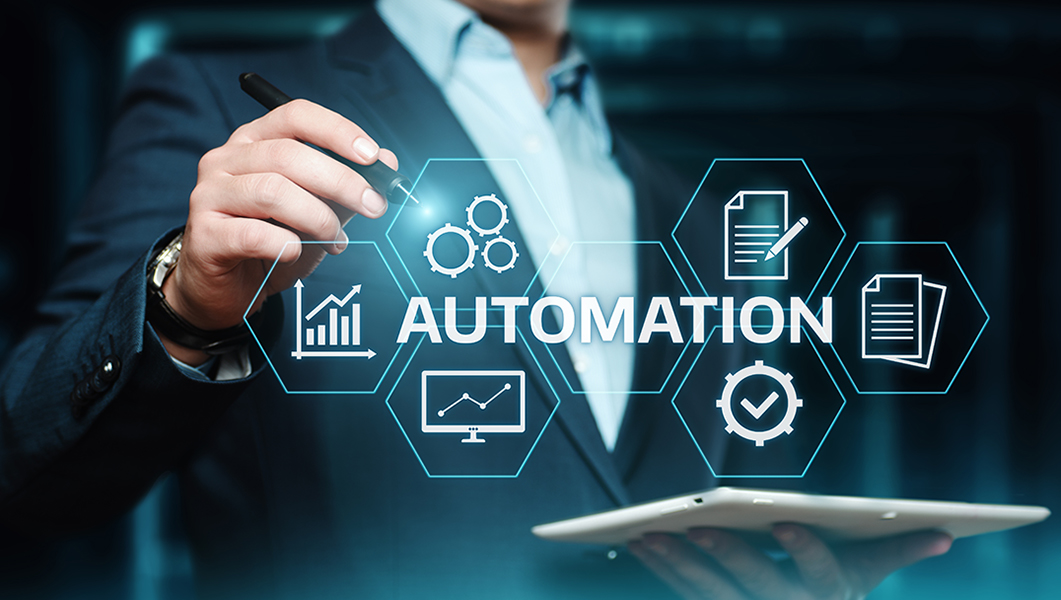
Recently Genus partnered with Tungsten Automation and Carahsoft to present a webinar outlining the strategies for implementing intelligent automation within the government sector.
In this blog, we provide easy-to-understand action items for getting started and present key points to help you think more strategically about your specific intelligent automation implementation.
When it comes to strategic thinking, it's about approaching your goals with a fresh perspective, carefully charting your path from where you currently stand to where you aspire to be. So, let’s get started with our Top 5 Strategies to Implement Automation:
First, get a clear vision of what you want to achieve with your intelligent automation. This is an obvious first step, but surprisingly one that many pass over. If you haven’t set your goals yet, don't fret because there are nuances to this within the intelligent automation realm, which we'll go over here.
Firstly, strategic thinking means letting go of constraints and giving yourself room to go with the flow as conditions change. A good first start is to map out the outcomes you hope will help you deliver exceptional constituent services.
From a strategic perspective, approach intelligent automation with a focus on improving the following:
Usability – Think about usability in the context of your constituents – What are they trying to achieve? What language do they speak? What is their education or literacy level? These are factors to think about when building systems that will be usable for all constituents.
Access – Ensure access to resources for ALL members of your community. As you know, equity is a huge factor for constituent services. So, be as inclusive as absolutely possible. Having this mindset will shift how you think about implementing intelligent automation.
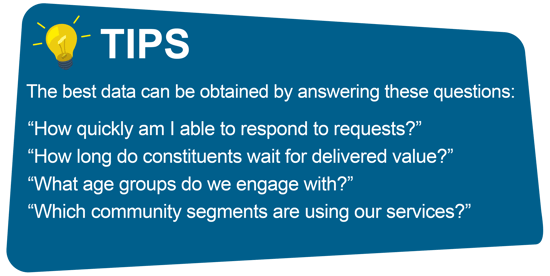
Speed – Faster access to key resources improves customer satisfaction. If you’re in the business of providing key services to resources, the more quickly you respond to their needs, the better. With speed, you’re also able to get feedback at a more rapid and regular pace. And with quicker feedback, you’ll have more opportunities to be introspective in figuring out how to improve service delivery.
Looking at potential barriers allows you to be proactive. Within the context of intelligent automation, two types of barriers always seem to come up – Organizational and Technological:
Gaining Buy-In – One way to be proactive is to get buy-in for your initiative from internal stakeholders (team members, superiors, peers, direct reports, etc.) or from outside organizations or agencies.
Change Management – Change within an organization can be hard, so start by making slow changes. This way you can increment those changes at a more regulated pace.
Dealing with Detractors – Recognize potential detractors and find a way to get them on your side. This goes for internal and external constituents.
New Technology – Once you figure out which technological tools are appropriate for your best use case, decide if it’s appropriate for your needs.
Fitting Pieces Together – Very seldom will you have a single tool that has everything you need. Remember you can’t do everything yourself so you have to figure out how to integrate partners and experts into your team.
Uncovering Best Practices – There’s no need to reinvent the wheel, so make sure you leverage what’s been done before. Gain knowledge from your peers, vendors, partners, or others who have expertise and experience.
There are plenty of innovative technologies to help you on your quest for intelligent automation. Here are the more common tools we see within the state and local government sectors:
Robotic Process Automation (RPA) – This technology automates human interaction with systems. We typically use RPA to move data from one system to another. Many times RPA is a low-code platform where you can leverage a non-developer or business analysis. But there will be times a professional developer is needed, especially when deploying RPA.
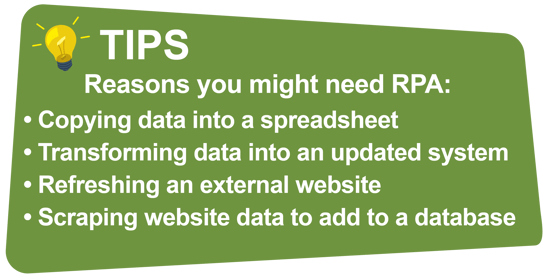
Artificial Intelligence (AI) – Machine Learning (ML) – As you know, the biggest advancement in AI today is ChatGPT. But does it really fit into your workflow processes? At its core, ChatGPT is a large language model that’s able to parse and “understand” natural language and seems to have reasoning capabilities and can generate seemingly novel responses.
Machine Learning (ML) – When it comes to intelligent document processing, harnessing the power of ML to identify data points within an unstructured document can be incredibly advantageous. ML's greatest asset is its ability to continuously learn and adapt, allowing you to continually enhance the system and prevent it from becoming stagnant.
Low-Code Applications Platforms – By leveraging low code, you have the ability to build app platforms quickly without involving a professional developer or programmer. Instead, you utilize team members who are more involved with day-to-day operations (known as "citizen developers"). By not using complex code, you can build applications faster and without professional-code tools.
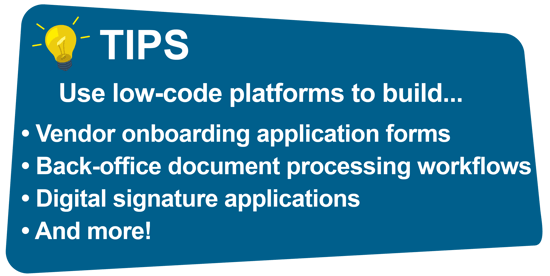
Natural Language Processing (NLP) – NLP finds information that is in human writing or speech, as in transcriptions. This differs from the large language models mentioned previously in the sense that when you’re looking for information you can find it within natural language – without the machine reasoning with it or responding to it.
Here at Genus, we specialize in using Tungsten Automation TotalAgility, an intelligent automation platform for low-code application development, which integrates many of the technologies around document processing, RPA, NLP, ML, etc.
For more technology definitions and use cases, watch the webinar in its entirety.
As we've explored in this blog, thinking strategically takes innovation. This goes for planning as well. You may have a plan for a project, but adding content and texture to the plan takes strategic thinking.
Here are a few key components of a project plan and projected rules of engagement. One thing to keep in mind when it comes to intelligent automation, these components don’t change, but they may take on a different structure.
For more plan ideas, watch the webinar - "Unlock the Future of Government Efficiency: Top 5 Strategies for Implementing Intelligent Automation"
Don’t go on this intelligent automation journey alone when there are others out there who can help. It's important to leverage allies to help support you. First, communicate early and often. And because they're probably very busy, you'll have to make a concerted effort to engage with them. Here are a few tips:
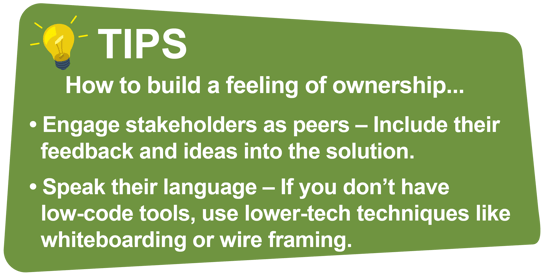
Upgrading digital capabilities like intelligent automation is the beginning of adding value to your overall processes. By implementing some of the steps outlined here and adding effective tools and platforms, you’ll improve constituent services daily and build trust along the way.
Delivering better quality services to constituents is a noble endeavor and something that we at Genus Technologies support by providing intelligent automation, process transformation, and digital modernization, including cloud services.
If you’re interested in learning more or need help to modernize your constituent service processes with intelligent automation, contact sales@genustechnologies.com.
For more tips and use cases, we invite you to watch the webinar - "Unlock the Future of Government Efficiency: Top 5 Strategies for Implementing Intelligent Automation."
Get more useful content, expert tech tips, and timely articles delivered to your inbox ~ Subscribe to the Genus Technologies Blog!

OpenAI, a research and development company specializing in the application of artificial intelligence, released a public beta of ChatGPT, a...

Businesses today are constantly looking for ways to work smarter, serve customers better, and cut unnecessary costs. With growing demands and...

Opening a new account or applying for a mortgage involves asking for and handling customer information from different sources and from almost any...